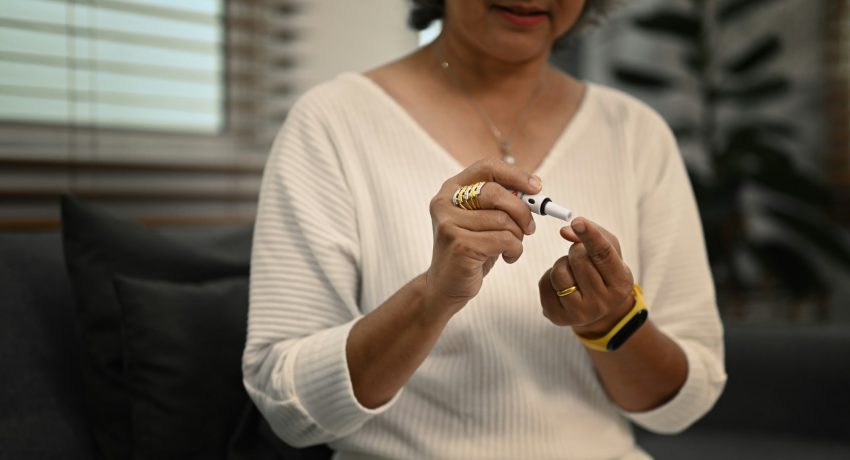Advances in Diabetes Treatment Technology
Diabetes is a chronic health condition that affects millions of people worldwide. Characterized by the inability of the body to properly process glucose, diabetes can lead to a host of complications if not managed correctly. Over the past few decades, advances in diabetes treatment technology have significantly improved the quality of life for people with this condition. From continuous glucose monitors (CGMs) to artificial pancreas systems, technology has revolutionized the management and treatment of diabetes.
Continuous Glucose Monitors (CGMs)
One of the most significant advancements in diabetes management over recent years has been the development and widespread adoption of continuous glucose monitors (CGMs). These devices allow individuals to monitor their blood glucose levels in real time, providing invaluable data that can be used to make informed decisions about diet, medication, and lifestyle.
Traditional methods of glucose monitoring involved using a lancet to prick the finger and draw a blood sample for testing. Although effective, this method is often inconvenient and painful. CGMs, on the other hand, use a small sensor inserted under the skin to measure glucose levels in the interstitial fluid. The sensor transmits data to a receiver or a smartphone app, allowing users to view their glucose levels at any time.
This real-time monitoring is especially beneficial for individuals with Type 1 diabetes, who must carefully manage their insulin levels. CGMs can alert users to rising or falling glucose levels before they become dangerously high or low, providing an early warning system that can prevent complications such as diabetic ketoacidosis or severe hypoglycemia.
Artificial Pancreas Systems
Another groundbreaking development in diabetes treatment technology is the artificial pancreas, also known as a closed-loop insulin delivery system. This system combines a CGM with an insulin pump, creating a feedback loop that automatically adjusts insulin delivery based on real-time glucose readings.
The concept of an artificial pancreas aims to mimic the function of a healthy pancreas, which automatically regulates blood glucose levels by secreting the appropriate amount of insulin. In individuals with Type 1 diabetes, the pancreas no longer produces insulin, requiring manual management of glucose levels. The artificial pancreas reduces the need for manual intervention by automating insulin delivery, thereby simplifying diabetes management and improving outcomes.
Early iterations of artificial pancreas systems required users to manually input data such as carbohydrate intake and exercise levels. However, advancements in machine learning and artificial intelligence have enabled newer systems to predict glucose trends and adjust insulin delivery more accurately and autonomously. Clinical trials have shown that these systems can significantly reduce the time spent in hypoglycemia or hyperglycemia, leading to better overall glucose control.
Smart Insulin Pens and Pumps
Smart insulin pens and pumps are another area where technology has made significant strides. Traditional insulin injections and pumps have been the mainstay of diabetes management for years, but newer, smarter versions of these devices offer enhanced features that make them more effective and user-friendly.
Smart insulin pens, for example, can track the timing and dosage of insulin injections, providing data that can be reviewed later to optimize treatment. These devices can also connect to smartphone apps, allowing users to receive reminders to take their medication and share data with healthcare providers.
Insulin pumps have also seen significant advancements. Modern pumps are more accurate and can deliver insulin at more precise rates than older models. Additionally, many insulin pumps now come with features such as bolus calculators, which help users determine the correct amount of insulin to take based on their blood glucose levels and carbohydrate intake.
The integration of insulin pumps with CGMs has further enhanced their effectiveness. Known as sensor-augmented pumps, these devices can automatically suspend insulin delivery if glucose levels start to drop too low, reducing the risk of hypoglycemia. Some advanced systems even have predictive low-glucose management features, which can predict when glucose levels are likely to fall and make preemptive adjustments to insulin delivery.
Wearable Technology
Wearable technology is another area where advances have been made in diabetes treatment. Wearable devices such as smartwatches and fitness trackers can provide valuable data that can help individuals manage their condition more effectively. Some devices are equipped with sensors that can monitor glucose levels, while others can track physical activity, heart rate, and other vital signs.
For example, some smartwatches now offer apps that can sync with CGMs, allowing users to view their glucose levels directly on their wrist. This makes it easier to keep track of glucose levels throughout the day, especially for individuals who are active and on the go.
The data collected by wearable devices can also be shared with healthcare providers, enabling more personalized and effective treatment plans. Additionally, some wearable devices offer features such as activity reminders and sleep tracking, which can help users adopt healthier habits and improve their overall well-being.
Telemedicine and Remote Monitoring
Telemedicine and remote monitoring have also become increasingly important in the management of diabetes. The COVID-19 pandemic accelerated the adoption of telemedicine, highlighting its potential to revolutionize diabetes care.
Telemedicine allows individuals to consult with healthcare providers from the comfort of their own homes, reducing the need for in-person visits. This is particularly beneficial for individuals with diabetes, who may require frequent check-ins with their healthcare team. Remote consultations can provide timely support and guidance, helping to prevent complications and improve outcomes.
Remote monitoring technology, such as CGMs and smart insulin pens, can transmit data directly to healthcare providers, enabling continuous monitoring of patients’ glucose levels and treatment adherence. This real-time data can help healthcare providers make more informed decisions and provide more personalized care.
Gene Therapy and Stem Cell Research
While still in the experimental stages, gene therapy and stem cell research hold great promise for the future of diabetes treatment. These cutting-edge approaches aim to address the root cause of diabetes rather than just managing its symptoms.
Gene therapy involves modifying or replacing faulty genes that contribute to diabetes. For example, researchers are exploring ways to introduce genes that can stimulate insulin production in individuals with Type 1 diabetes. While this approach is still in its early stages, it has the potential to provide a long-term solution to the condition.
Stem cell research is another promising area of study. Scientists are investigating the potential of stem cells to regenerate insulin-producing beta cells in the pancreas. If successful, this could lead to a cure for Type 1 diabetes by restoring the body’s ability to produce insulin naturally. Clinical trials are ongoing, and while significant challenges remain, the progress made so far is encouraging.
Conclusion
The advances in diabetes treatment technology over the past few decades have transformed the way individuals manage this chronic condition. From continuous glucose monitors and artificial pancreas systems to smart insulin pens and wearable technology, these innovations have made it easier to monitor and control blood glucose levels, reducing the risk of complications and improving quality of life.
As research continues and new technologies are developed, the future of diabetes treatment looks promising. The combination of medical and technological advancements has the potential to move us closer to a world where diabetes can be managed more effectively—and perhaps even cured.




